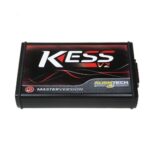Tuning your car can seem daunting, but understanding the basics can empower you to unlock hidden performance and efficiency. This guide provides fundamental Car Tuning Tips For Beginners, covering key concepts like horsepower, torque, and the essential components involved in engine performance optimization.
Understanding Horsepower and Torque: The Power Behind Your Car
Before diving into tuning, it’s crucial to grasp the difference between horsepower (HP) and torque. Horsepower measures your engine’s ability to perform work over time, essentially how quickly your car can accelerate or overtake. Torque, on the other hand, represents the twisting force your engine generates to turn the wheels, crucial for initial acceleration and pulling power. Think of horsepower as speed and torque as strength.
There are different types of horsepower measurements:
- Horsepower (HP): A general measure of power without accounting for engine inefficiencies.
- Brake Horsepower (BHP): A more accurate measurement of usable power at the wheels, considering friction and mechanical losses.
- Metric Horsepower (PS): Commonly used in Europe, slightly less than imperial horsepower (1 HP ≈ 0.986 PS).
A car with high horsepower and low torque excels at high speeds, while a vehicle with high torque and moderate horsepower is better suited for towing or off-roading.
Engine Performance Basics: The Building Blocks of Tuning
Three core elements influence engine performance:
Air-Fuel Mixture: Finding the Perfect Balance
The air-fuel ratio dictates how efficiently your engine burns fuel. The ideal ratio ensures complete fuel combustion, maximizing power and minimizing waste. A mixture that’s too rich (excess fuel) or too lean (excess air) can lead to performance issues and engine damage.
Ignition Timing: Sparking at the Right Moment
Precise ignition timing is essential for optimal combustion. The spark plug must ignite the air-fuel mixture at the exact moment for maximum power. Advanced timing can boost power but risks pre-ignition or engine knocking. Retarded timing results in sluggish performance.
Exhaust Flow: Letting Your Engine Breathe
Efficient exhaust flow is crucial for removing combusted gases. Reduced back pressure allows the engine to “breathe” better, improving performance. Modifications like larger diameter exhaust pipes or performance exhaust systems can enhance exhaust flow.
Introduction to Tuning: Refining Your Engine’s Performance
Tuning involves adjusting these core elements to optimize your engine’s performance. Reflashing the Engine Control Unit (ECU), the “brain” of your car, is a common tuning method.
Reflashing the ECU: Rewriting the Rules
Reflashing allows you to modify the ECU’s software, adjusting parameters like air-fuel ratio and ignition timing to improve performance, fuel efficiency, and responsiveness.
Utilizing Tuning Software: VCM Editor and Scanner
Software like HP Tuners’ VCM Editor provides a user-friendly interface for customizing ECU settings. VCM Scanner allows for data logging, recording vehicle performance under various conditions to inform tuning adjustments.
Professional Tuning: Expertise for Optimal Results
While DIY tuning is possible, professional tuning offers the advantage of experience and specialized equipment, ensuring both performance gains and vehicle reliability.
Conclusion: Taking the First Steps in Car Tuning
Tuning allows you to tailor your car’s performance to your specific needs and driving style. By understanding the fundamentals of horsepower, torque, and the key components of engine performance, you can embark on your tuning journey with confidence. Remember that resources like online forums, educational videos, and professional tuners can provide valuable guidance and support throughout the process.



